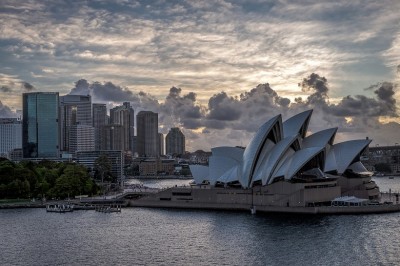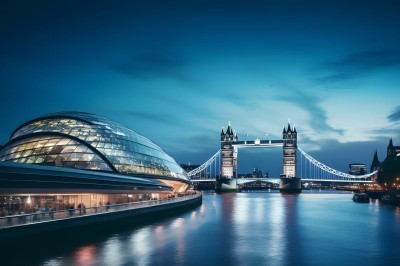Embracing the Adventure SpiritThe Allure of the Australian Landscape
Australia beckons backpackers with its vast and varied landscapes, from the sun-kissed beaches of the Gold Coast to the rugged outback of the Northern Territory. The continent's sheer size and diversity offer an unparalleled opportunity for adventure. Whether it's surfing in Byron Bay, hiking through the Blue Mountains, or exploring the ancient rainforests of Queensland, Australia promises a unique blend of natural wonders.
The Cultural Tapestry
Backpacking through Australia is not just about the physical journey; it's also a deep dive into a rich cultural tapestry. Indigenous cultures, which have thrived for tens of thousands of years, offer a chance to understand the country's roots. Urban centers like Sydney and Melbourne, with their vibrant arts scenes, cafes, and multicultural neighborhoods, provide a contemporary contrast and a chance to experience the modern Australian way of life.
The Backpacker Community
Australia's well-established backpacker community means that travelers are never far from a fellow adventurer or a support network. Hostels, travel agencies, and tour operators are geared towards backpackers, offering both resources and opportunities to connect. This community is an integral part of the backpacking experience, providing a sense of camaraderie on the road.
The Practicalities of Backpacking Down Under
Backpacking in Australia requires preparation and respect for the country's vastness and environmental conditions. Understanding visa requirements, transportation options, and safety measures are crucial. The country's well-maintained roads, extensive bus and train networks, and internal flights make it accessible for backpackers to traverse. However, the remote nature of some destinations means that careful planning is essential.
The Seasonal Considerations
The timing of a backpacking trip can greatly affect the experience. Australia's seasons are opposite to those in the Northern Hemisphere, and the climate can vary dramatically from region to region. The tropical north has a wet and dry season, while the south has four distinct seasons. Timing your visit to coincide with favorable weather conditions is key to a successful backpacking adventure.
The Commitment to Sustainable Travel
Australia's natural environment is one of its greatest assets, and there is a strong emphasis on preserving it. Backpackers are encouraged to embrace sustainable travel practices, minimizing their environmental footprint and contributing to conservation efforts. This includes being mindful of wildlife, adhering to park regulations, and participating in eco-friendly tours and activities.
The Adventure Awaits
Every backpacker's journey in Australia is unique, shaped by personal interests, encounters, and the unpredictable nature of travel. Embracing the adventure spirit means being open to new experiences, whether it's learning to surf, sleeping under the stars in the outback, or joining a local festival. Australia's landscape and lifestyle provide the perfect backdrop for an unforgettable backpacking adventure.
Best Time to Backpack in AustraliaUnderstanding the Climate and Seasons
Australia's vast size means it experiences a wide range of climates, from tropical in the north to temperate in the south. The country's seasons are opposite to those in the Northern Hemisphere, with summer from December to February, autumn from March to May, winter from June to August, and spring from September to November.
Tropical North: The Wet and Dry Seasons
In the tropical north, which includes destinations like Cairns and Darwin, there are two main seasons: the wet and the dry. The wet season, from November to April, is characterized by high humidity, monsoonal rains, and storms. This can make backpacking challenging due to flooding and cyclones. The dry season, from May to October, offers sunny days and cooler temperatures, making it the ideal time for exploring the Great Barrier Reef and the national parks of the Top End.
Southern Australia: Mild Summers and Cool Winters
The southern parts of Australia, including cities like Sydney, Melbourne, and Adelaide, experience mild summers and cool winters. The best time to backpack in these areas is during the spring and autumn months when the weather is pleasant, and there are fewer tourists. Summers can be hot, with occasional heatwaves, while winters, although rarely freezing, can be chilly and damp.
Central Australia: The Desert Climate
Central Australia, home to the iconic Uluru, has a desert climate with extreme temperature variations. Summers (December to February) can be scorching with temperatures often exceeding 35°C (95°F), making hiking and outdoor activities potentially dangerous. Winter (June to August) brings cooler temperatures, with cold nights, making it a more comfortable time for backpacking in the desert.
Western Australia: Varying Climates
Western Australia's climate varies greatly from the north to the south. The northern part, including the Kimberley region, is best visited in the dry season, similar to the tropical north. The southern part, including Perth, has hot, dry summers and wet winters. The shoulder seasons of spring and autumn provide the best conditions for backpacking along the coast and in the wine regions.
Eastern Coast: Beach Backpacking
The eastern coast, stretching from the tropical Whitsundays down to the temperate climates of Victoria and Tasmania, is a year-round destination for beach backpackers. However, the peak summer months can bring crowds to popular spots like the Gold Coast and Byron Bay. For a more tranquil experience, consider visiting in the shoulder seasons when the weather is still warm enough for beach activities, and accommodation is more affordable.
Tasmania: The Wild Island State
Tasmania, with its wild landscapes and cooler climate, is best visited in the summer months when the weather is mild and the days are long. Winter can be cold, with snow in the highlands, but it also offers the chance to experience Tasmania's rugged beauty without the crowds.
By understanding the diverse climates and seasons across Australia, backpackers can plan their trip to coincide with the best weather conditions for their chosen activities and destinations. Whether it's snorkeling in the Great Barrier Reef, hiking in the Blue Mountains, or exploring the outback, timing your visit appropriately will enhance your backpacking adventure.
Essential Gear and Packing Tips for the Australian OutbackWhat to BringClothing
- Lightweight, Long-Sleeved Shirts: Protects against the sun and insects.
- Breathable Pants: Zip-off options can convert to shorts.
- Quality Footwear: Hiking boots for treks and sturdy sandals for casual walks.
- Hat with a Brim: Offers sun protection for face and neck.
- Swimwear: For occasional swimming spots.
- Undergarments: Quick-dry material is preferable.
- Socks: Wool or moisture-wicking fabrics to prevent blisters.
- Lightweight Tent: With a high UV rating and good ventilation.
- Sleeping Bag: Appropriate for the season (check temperature ratings).
- Sleeping Pad: Adds comfort and insulation from the ground.
- Durable Backpack: With a rain cover and comfortable straps.
- Day Pack: For shorter excursions away from your base camp.
- Water Bottles or Hydration System: At least 3 liters capacity.
- Water Purification: Tablets or a portable filter.
- Portable Stove: Gas stove with extra fuel canisters.
- Cookware: Lightweight and easy to clean.
- Utensils: Multi-use tools like a spork.
- Food: Non-perishable, high-energy, and easy to prepare items.
- Bear-Proof Food Container: To protect from wildlife (where applicable).
- Map and Compass: Even if you have a GPS device.
- Satellite Phone or Personal Locator Beacon (PLB): For emergencies.
- First Aid Kit: Tailored to your group's needs and trip duration.
- Sunscreen and Lip Balm: High SPF and broad-spectrum.
- Insect Repellent: With DEET or picaridin.
- Sunglasses: UV-protection is a must.
- Headlamp or Flashlight: With extra batteries.
- Multi-tool or Knife: For various camp tasks.
- Duct Tape: Fixes a multitude of gear issues.
- Biodegradable Soap: For personal hygiene and dishwashing.
- Dry Bags or Ziploc Bags: Keeps electronics and important items dry.
- Notebook and Pen: For recording experiences or important information.
- Laptops and Tablets: Risk of damage and adds weight.
- Excess Gadgets: Simplify to reduce pack weight and manage battery life.
- Jeans: They're heavy, take long to dry, and are not versatile.
- Excessive Layers: Choose multi-functional clothing instead.
- Jewelry and Watches: Can get lost or damaged; a simple, durable watch is sufficient.
- Glass Containers: Risk of breakage and unnecessary weight.
- Traditional Towels: Opt for microfiber towels that are light and quick-drying.
- Large Pillows: Use a stuffed sack with clothes instead.
- Big Books: Consider an e-reader or small travel guides.
- Disposable Water Bottles: Not environmentally friendly and impractical for long treks.
- Single-Use Batteries: Rechargeable batteries are more efficient and eco-friendly.
By focusing on the essentials and leaving behind items that add unnecessary weight or are unlikely to be used, backpackers can ensure a more enjoyable and less burdensome experience in the Australian Outback.
Top Destinations for Backpackers in AustraliaFrom the Great Barrier Reef to the OutbackThe Great Barrier Reef
The Great Barrier Reef is an essential destination for backpackers visiting Australia. As the world's largest coral reef system, it offers unparalleled opportunities for snorkeling and diving. The reef is home to a dazzling array of marine life, including colorful fish, turtles, and coral gardens. Popular base points for exploring the reef include Cairns and Airlie Beach, where backpackers can find affordable accommodation and a variety of tour options to suit different budgets.
Sydney
Sydney, Australia's largest city, is a vibrant and bustling metropolis with a lot to offer backpackers. The iconic Sydney Opera House and Harbour Bridge are must-see landmarks. The city's numerous beaches, like Bondi and Manly, provide a perfect setting for relaxation, surfing, and meeting fellow travelers. The city's hostels are often social hubs, offering a great way to connect with other backpackers.
Melbourne
Melbourne is known for its artsy vibe, coffee culture, and street art. Backpackers can explore the city's laneways, which are filled with hidden cafes, bars, and galleries. The Great Ocean Road, a scenic coastal drive starting near Melbourne, is a popular day trip or multi-day adventure, featuring the famous Twelve Apostles rock formations.
Byron Bay
Byron Bay is a laid-back coastal town popular among backpackers for its surf culture, alternative lifestyle, and vibrant nightlife. The town offers a range of budget-friendly accommodation options, from hostels to camping sites. The nearby hinterland also provides opportunities for bushwalking and wildlife spotting.
The Red Centre
The heart of Australia's Outback, the Red Centre is home to the iconic Uluru (Ayers Rock) and the rugged beauty of the desert. Backpackers can learn about Aboriginal culture, hike around the base of Uluru, and witness the stunning colors of the rock at sunrise and sunset. Alice Springs serves as the gateway to this region and offers a range of backpacker hostels and tours.
Tasmania
Tasmania, an island state south of the mainland, is a haven for nature lovers and adventure seekers. With its pristine wilderness, national parks like Cradle Mountain and Freycinet, and the famous Overland Track, Tasmania offers a quieter, more off-the-beaten-path experience for backpackers. Hobart, the capital, provides a charming base with its historic architecture and vibrant market scene.
The Gold Coast
The Gold Coast is a coastal city famed for its long sandy beaches, surf spots, and theme parks. Backpackers can enjoy the lively atmosphere of Surfers Paradise, explore the rainforest hinterland, or party the night away in the city's numerous bars and clubs. Affordable accommodation and a well-established backpacker community make it a popular stop.
Perth and Western Australia
Perth, the capital of Western Australia, is a laid-back city with beautiful beaches and a sunny climate. From here, backpackers can venture to destinations like the Pinnacles Desert, Ningaloo Reef, and the Kimberley region. Western Australia's vast distances make it a unique road-tripping adventure for those looking to escape the crowds.
The Whitsunday Islands
The Whitsunday Islands offer some of the most beautiful seascapes in Australia. Backpackers can sail around the 74 islands, many of which are uninhabited, snorkel in the clear waters, or relax on the white sands of Whitehaven Beach. Airlie Beach is the main launching point for trips to the Whitsundays, with a variety of options for budget travelers.
Adelaide and South Australia
Adelaide, known as the "city of churches," is the gateway to South Australia's wine regions, such as the Barossa Valley and McLaren Vale. Kangaroo Island, a short trip from Adelaide, is a wildlife sanctuary where backpackers can see koalas, kangaroos, and sea lions in their natural habitat. The city's cultural festivals and markets also offer a taste of local life.
Budgeting for Your Australian Backpacking TripCost-Saving Tips and Managing ExpensesTravel During Off-Peak Seasons
To save on travel costs, consider backpacking during Australia's off-peak seasons. Airfare and accommodation prices tend to drop outside of the Australian summer months (December to February) and school holiday periods. The shoulder seasons of spring (September to November) and autumn (March to May) offer pleasant weather and fewer crowds.
Use Budget Airlines and Public Transport
Australia has several budget airlines that offer competitive prices for domestic flights. Booking in advance can secure you the best deals. For ground travel, utilize Australia's extensive public transport network, including trains, buses, and ferries, which are often cheaper than renting a car or taking domestic flights.
Stay in Hostels or Camp
Hostels are a staple for budget-conscious backpackers, providing affordable accommodation and opportunities to meet fellow travelers. Many hostels offer kitchen facilities, allowing you to cook your own meals and save on dining out. Camping is another cost-effective option, with numerous campgrounds and national parks offering spots for tents and campervans.
Cook Your Own Meals
Eating out in Australia can be expensive. To manage food expenses, buy groceries and prepare your own meals. Hostels, campgrounds, and even some public areas have BBQs and cooking facilities. Visit local markets for fresh produce and try to limit dining out to occasional treats.
Take Advantage of Free Activities
Australia boasts a wealth of free activities, from hiking in national parks to enjoying its world-famous beaches. Many museums and galleries offer free entry or have special discount days. City walking tours, often based on tips, are a great way to learn about the area without a hefty price tag.
Work or Volunteer
Consider working or volunteering during your trip to offset some of your travel costs. Working holiday visas allow travelers to take up short-term employment, and volunteer opportunities can sometimes provide free accommodation and meals in exchange for work.
Buy a Prepaid SIM Card
Avoid expensive international roaming fees by purchasing a prepaid Australian SIM card for your phone. This will give you access to local rates for calls, texts, and data. Many providers offer competitive packages tailored to travelers.
Use Discount Cards and Coupons
Look into discount cards for backpackers and young travelers, such as the YHA or VIP Backpackers cards, which can offer savings on accommodation, tours, and transport. Check online for coupons and deals on attractions and activities in the areas you plan to visit.
Travel Insurance
While it may seem like an additional expense, travel insurance is essential to protect against unforeseen events such as illness, theft, or cancellations. Shop around for a policy that covers your specific needs as a backpacker, ensuring it includes medical coverage and any adventure activities you plan to undertake.
Track Your Spending
Keep a daily log of your expenses to stay on top of your budget. There are several mobile apps designed for travelers to help track spending, split bills, and convert currencies. Being mindful of your outgoings will help you make adjustments to your spending habits if necessary.
Transportation Options for Getting Around AustraliaNavigating the Land Down UnderDomestic Flights
Australia is a vast country, and distances between major cities can be significant. For those looking to cover large distances in a short amount of time, domestic flights are the most efficient mode of transportation. Australia's major airlines, including Qantas, Virgin Australia, Jetstar, and Rex, offer extensive networks connecting not only capital cities but also regional and remote areas. Booking in advance can often secure more affordable fares.
Trains
Train travel in Australia offers a scenic and relaxed way to see the country. The rail network connects many major cities and regional centers. Iconic long-distance train journeys such as The Ghan, Indian Pacific, and The Overland provide a unique experience crossing the continent. For daily travel, cities like Sydney, Melbourne, and Brisbane have suburban train networks that are convenient for getting around the metropolitan areas.
Buses and Coaches
Buses and coaches are a cost-effective option for getting around Australia, especially for those on a tight budget. Companies like Greyhound and Premier Motor Service run long-distance routes that connect cities, towns, and popular tourist destinations. Local bus services are available in most urban areas, providing an extensive network for daily commutes and short trips.
Car Rentals and Campervans
Renting a car or campervan gives travelers the ultimate freedom to explore Australia at their own pace. With a wide range of rental companies to choose from, visitors can select a vehicle that suits their needs and budget. This option is particularly popular for exploring the country's vast and varied landscapes, from coastal drives to outback adventures. Remember to consider factors like fuel costs, accommodation, and the need for a valid driver's license.
Cycling
For the more adventurous and eco-conscious traveler, cycling can be a rewarding way to see Australia. Some cities, such as Melbourne and Canberra, are known for their bike-friendly infrastructure. There are also numerous cycling trails throughout the country, ranging from leisurely coastal paths to challenging mountain bike tracks.
Ferries
In coastal cities and regions with significant waterways, ferries are a scenic and practical mode of transport. Sydney's ferry service is iconic, offering routes that traverse Sydney Harbour, connecting the city with suburbs and tourist spots like Manly and Taronga Zoo. In other areas, such as Tasmania and the Whitsunday Islands, ferries are essential for reaching island destinations.
Walking and Hiking
For short distances and a closer connection to the environment, walking is an excellent option in Australia's pedestrian-friendly cities and towns. Additionally, the country boasts world-class hiking trails for those looking to immerse themselves in nature, such as the Larapinta Trail in the Northern Territory or the Overland Track in Tasmania.
Public Transport Cards
In major cities, public transport cards can simplify and reduce the cost of travel. Cards like Sydney's Opal, Melbourne's Myki, and Brisbane's Go Card can be used across multiple modes of transport, including trains, buses, and ferries, making them convenient for urban exploration.
Ride-Sharing and Taxis
Ride-sharing services like Uber and Ola are available in most major cities and many regional areas, offering a convenient alternative to traditional taxis. These services can be accessed via smartphone apps, providing a cashless and often more affordable option for getting from point A to point B.
Internal Flights and Island Hopping
For those interested in visiting Australia's islands, such as Kangaroo Island, the Whitsundays, or Tasmania, internal flights and island-hopping tours can be arranged. These services provide access to some of the country's most pristine and secluded locations.
Navigating Australia's diverse transportation options can greatly enhance the backpacking experience, offering a mix of convenience, adventure, and the opportunity to see the country from different perspectives. Whether you're crossing the outback or cruising along the coast, there's a mode of transport to suit every itinerary and budget.
Safety and Etiquette While Backpacking in AustraliaStaying SafeUnderstanding the Climate
Australia's climate varies greatly throughout the country, and it's essential to understand the local weather patterns of the regions you plan to visit. In the arid Outback, temperatures can soar, so it's crucial to stay hydrated and avoid heatstroke. Conversely, in the southern regions, winters can be cold, and proper attire is necessary to prevent hypothermia.
Wildlife Precautions
Australia is home to a diverse range of wildlife, some of which can be dangerous. Always keep a safe distance from animals, both on land and in water. Be aware of the risks of encounters with creatures like snakes, spiders, and marine animals such as jellyfish and sharks. Read up on how to react if you come across potentially dangerous wildlife.
Health and Medical Considerations
Ensure you have comprehensive travel insurance that covers any medical emergencies. Familiarize yourself with the location of hospitals or clinics in the areas you'll be visiting. It's also wise to carry a basic first-aid kit and know how to use it.
Personal Security
When in cities or popular tourist spots, be mindful of your belongings to prevent theft. Use lockers or safes provided by hostels, and don't leave valuables unattended. At night, stick to well-lit areas and consider traveling in groups.
Emergency Services
In case of an emergency, dial 000 for the police, fire department, or ambulance. It's also a good idea to have the local non-emergency numbers saved in your phone.
Respecting the EnvironmentLeave No Trace Principles
Adhere to the Leave No Trace principles by disposing of waste properly, minimizing the impact of campfires, and respecting wildlife and natural habitats. Take all rubbish with you or dispose of it in designated bins.
Water Conservation
Water is a precious resource, especially in arid regions. Conserve water by taking shorter showers and turning off the tap when brushing your teeth. When camping, use biodegradable soap and avoid contaminating water sources.
Cultural Heritage Sites
Many areas in Australia, including Uluru and Kakadu National Park, are of great cultural significance to Indigenous peoples. Respect these sites by following guidelines, not climbing sacred formations, and not removing any artifacts.
Beach Safety
Australia's beaches are beautiful but can be hazardous. Swim between the red and yellow flags, which indicate patrolled areas where lifeguards are present. Be aware of riptides and other marine hazards.
Fire Safety
Bushfires are a serious risk, especially during the dry season. Follow fire bans and restrictions, and never leave a campfire unattended. Ensure your fire is completely extinguished before leaving the site.
By following these safety tips and showing respect for the environment and local customs, backpackers can ensure a memorable and responsible adventure in Australia.
Making the Most of Australian Culture and ExperiencesFood
Australia offers a diverse culinary scene that reflects its multicultural society. Backpackers should not miss the chance to try iconic Australian foods such as Vegemite, meat pies, and the famous Australian barbecue. Seafood is also a staple, with dishes like barramundi and Moreton Bay bugs being local favorites.
Exploring the food markets is a must-do for any food enthusiast. The Queen Victoria Market in Melbourne and the Sydney Fish Market offer a wide range of fresh produce and gourmet foods. For those interested in indigenous foods, seeking out bush tucker tours can provide an insight into native Australian ingredients and cooking methods.
Festivals
Australia's calendar is packed with festivals that celebrate its diverse culture. The Sydney Festival in January showcases arts and entertainment, while the Melbourne International Comedy Festival in March-April will have you laughing with acts from around the world. Music lovers should look out for events like Byron Bay's Bluesfest and the eclectic WOMADelaide.
For a taste of local culture, regional festivals such as the Tamworth Country Music Festival and the quirky Parkes Elvis Festival offer unique experiences. These events not only provide entertainment but also a chance to mingle with locals and experience the Australian way of life.
Indigenous Heritage
Understanding and respecting the Indigenous heritage is a crucial part of experiencing Australia. The Aboriginal and Torres Strait Islander cultures are among the oldest living cultures in the world, and there are many ways to engage with this rich heritage.
Visitors can take guided walks, such as the Daintree Rainforest walks in Queensland, to learn about the land and its significance to Indigenous people. Art lovers can explore galleries dedicated to Indigenous art or visit community centers where they can watch artists at work.
Cultural centers and museums, such as the Tjapukai Aboriginal Cultural Park near Cairns or the Museum of Contemporary Art's Aboriginal and Torres Strait Islander collection in Sydney, offer immersive experiences and educational programs. Participating in cultural tours and experiences, such as learning about the Dreamtime stories and traditional customs, can provide a deeper understanding of Australia's first peoples.


































